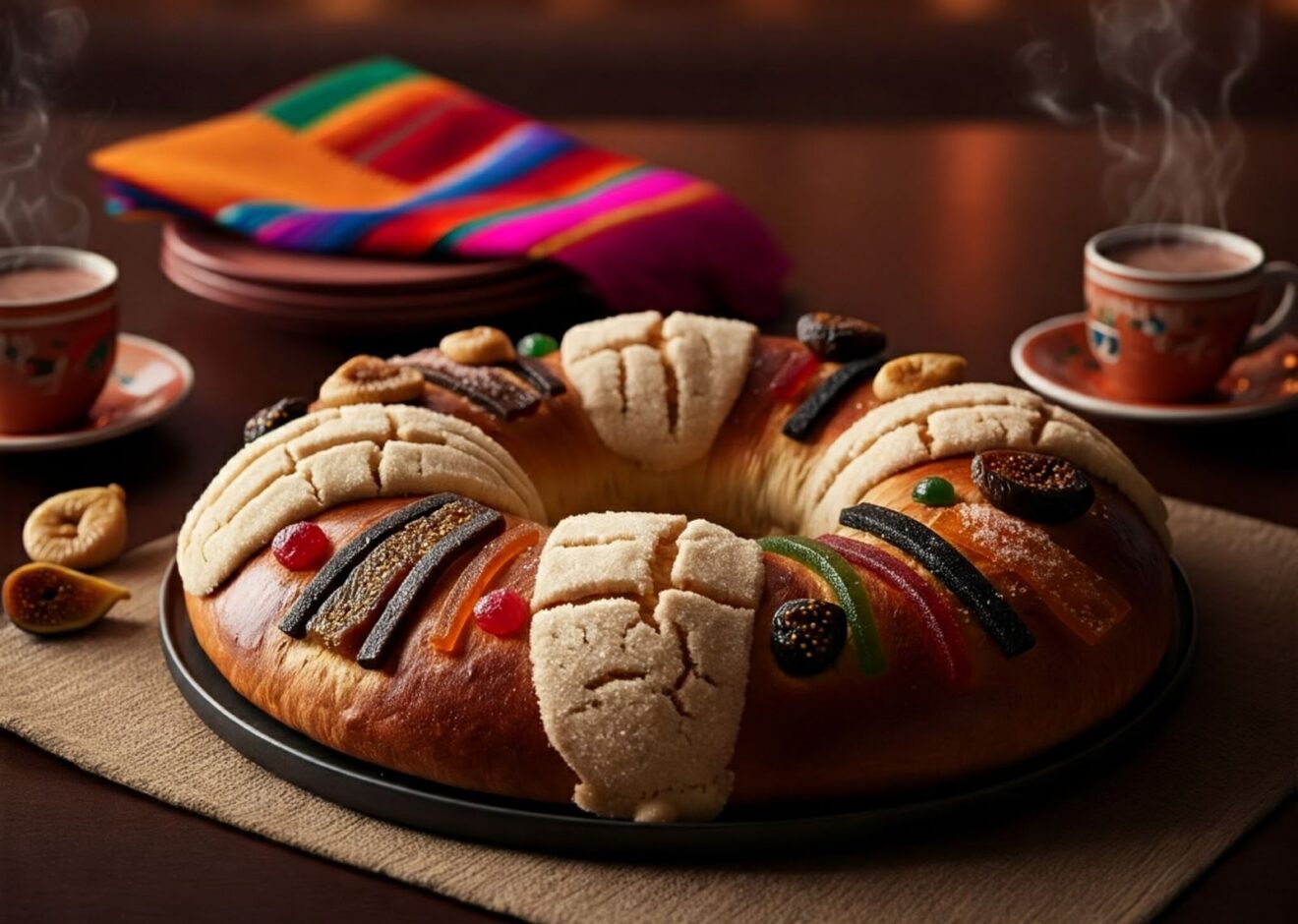Rosca de Reyes: The Sweet Bread Tradition That Unites Communities

What if a simple piece of bread could bring people together across cultures and generations? Enter the Rosca de Reyes, a beloved sweet bread at the heart of the Epiphany celebration. This crown-shaped pastry has become a symbol of unity and joy, celebrated not only in Mexico but increasingly across the United States, Canada, and beyond.
Let’s dive into the story, symbolism, and deliciousness behind this tradition that’s growing in popularity every year.
What is Rosca de Reyes?
The Rosca de Reyes, or King’s Cake, is a traditional sweet bread made to honor the Epiphany, a significant day in Catholic tradition. Celebrated on January 6th, it marks the visit of the three wise men to baby Jesus.
What Makes Rosca de Reyes Special?
- Shape: A ring, symbolizing a crown.
- Toppings: Soft candies, sugar, and dried fruits, representing jewels.
- Surprise Inside: Hidden figurines of baby Jesus, adding an interactive and fun element to the celebration.
How Rosca de Reyes is Made
The making of Rosca de Reyes is both an art and a labor of love. Bakers prepare the dough, shape it into a ring, and decorate it with colorful toppings. Before baking, figurines representing baby Jesus are hidden inside.
For many, baking or buying a Rosca is a communal activity, bringing families and friends together.
A Tradition Rooted in Symbolism
Beyond its delicious taste, the Rosca carries rich symbolism:
- Unity: Its circular shape represents eternal unity and community.
- Gifts of the Wise Men: The toppings resemble the jewels from the crowns of the three kings.
- Shared Responsibility: Finding the figurine inside comes with the responsibility of hosting a party on Candlemas Day (February 2nd).
Rosca de Reyes in Modern Times
What once was a primarily Mexican tradition is now celebrated globally. Mexican bakeries in the United States and Canada, for example, report record-breaking demand each year. In places like San Jose, bakeries sell thousands of Roscas during the first week of January.
The popularity of Rosca de Reyes showcases how traditions can transcend borders, connecting people through shared experiences.
What is the history of Rosca de Reyes?
The tradition of Rosca de Reyes dates back to Europe but was adapted in Mexico with unique flavors and customs.
Why are figurines placed inside the Rosca?
The figurines symbolize the hiding of baby Jesus to protect him from King Herod. Finding one makes you the “lucky host” for Candlemas Day.
What does Rosca de Reyes taste like?
Rosca de Reyes is slightly sweet with a soft, buttery texture. The toppings and dried fruits add a delightful crunch and flavor.
Where can I buy Rosca de Reyes?
Many Mexican bakeries and even large grocery chains offer Rosca de Reyes during the Epiphany season.
How do I celebrate with Rosca de Reyes?
Share it with family or friends! Each person cuts a slice, hoping to avoid (or find!) the figurine. The fun lies in the tradition of sharing.
Rosca de Reyes Tradition is more than a dessert—it’s a celebration of community, history, and shared joy. Whether you’re continuing a tradition or discovering it for the first time, this sweet bread is a delicious way to honor Epiphany and the spirit of togetherness.
📣 Have you tried Rosca de Reyes? Share your experience or photos in the comments below. Tag us to show off your sweet creation, and let’s keep this beautiful tradition alive!




